Boot: 2021-2022 Tecnica Zero G Pro Tour
Stated Flex: 130
Available Sizes: 22.5-31.0
Stated Last (size 26.5): 99 mm
Stated Range of Motion: 55°
Stated Forward Lean: 12° (can be adjusted to 13°)
Size Tested: 26.5
Stated Boot Sole Length: 303 mm
Blister’s Measured Weight (size 26.5):
- Shells, no Liners: 1099 & 1100 g
- Liners, no Laces or Footbeds: 211 & 210 g
- Shells + Liners: 1310 & 1327 grams
- Stock Insoles: 30 g each
- Removable Spoilers: 16 g each
Buckles: 4 magnesium buckles with wire clasps
Powerstrap: 45 mm with hook closure
Shell Material:
- Cuff: Grilamid Co-Injected with Carbon Fiber
- Shoe / Clog: Grilamid
Soles: Rockered, full Vibram rubber (ISO 9523)
Binding Compatibility: All “tech” / pin bindings; MNC Bindings
Tech Fittings: Dynafit Certified
MSRP: $899
Skis Used: Salomon MTN Explore 95; Armada Tracer 108; Salomon QST 106; Elan Ripstick 106; Line Sakana
Bindings Used: ATK Raider 2.0 12; Marker Alpinist 12; Dynafit TLT Speed; Atomic Backland Tour; Salomon / Atomic Shift MNC 13; Fritschi Tecton 12; Dynafit Radical ST 2.0; Tyrolia AAAttack 14 AT
Test Locations: Crested Butte, Cameron Pass, Berthoud Pass, Front Range Mountains, & Arapahoe Basin, CO
Days Tested: ~20
[Note: Our review was conducted on the 18/19 Zero G Tour Pro, which was not changed for 19/20, 20/21, or 21/22, apart from graphics.]
Intro
For the 18/19 season, Tecnica is completely overhauling their Zero G line of touring boots. The new boots feature an entirely new shell, walk mode, and well, basically everything compared to the previous line of Zero G boots.
The new boots are coming in at very low weights, with our pair of the stiffest Zero G boot in the lineup — the Zero G Tour Pro — weighing in at 1310 grams per boot (without stock insoles or detachable spoilers).
That’s 1310 g on a boot that has a stated flex of 130 and 55° range of motion.
And in case you aren’t entirely up on AT boots these days, you should know that that those numbers are pretty eye popping.
The Zero G Tour Pro’s weight puts it between the categories of ~1400-1500 gram, 130-flex touring boots designed for aggressive downhill skiing (e.g., Salomon S/Lab MTN & Atomic Hawx Ultra XTD 130) and lighter, more uphill-oriented boots like the Salomon S/Lab X-Alp, Dynafit TLT7, Atomic Backland Carbon, etc.
In other words, if the Zero G Tour Pro really lives up to its specs, it would be carving out a new category of ~1300 gram, 130-flex touring boots. And Tecnica knows this.
Here’s what Tecnica says about the new Zero G collection:
“The all-new Zero G collection pushes the boundaries of what a lightweight boot can do. Unique use of carbon, an innovative new Mobility Cuff System, a creative buckle system and anatomical liners and shells combine for a ground breaking, lightweight boot that stays true to the Tecnica promise of downhill performance.”
5 Boots in the “Zero G” Lineup
Tecnica will be offering these 5 variations of the Zero G:
Zero G Tour Pro (reviewed here): 130 flex; Grilamid shell and co-injected Carbon cuff; “Light Lock” Hook Powerstrap; “Ultralight-Light Fit” liner; Available sizes: 22.5-31.0
Zero G Tour Scout: 120 flex, Grilamid shell and PU cuff; “Light Lock” Hook Powerstrap; “Ultralight-Light Fit” liner; Available sizes: 24.0-31.0
Zero G Tour: 110 flex; PU shell and PU cuff; 35 mm Velcro Powerstrap; “Ultrafit Pro Light” liner; Available sizes: 24.0-31.0
Zero G Tour Scout W: 115 flex; Grilamid shell and PU cuff; “Light Lock” Hook Powerstrap; “Ultralight-W Light Fit” liner; Available sizes: 22.0-27.5
Zero G Tour W: 105 flex; PU shell and PU cuff; 35 mm Velcro Powerstrap; “Ultrafit Pro Light W” liner; Available sizes: 22.0-27.5
Size Range: 22.5 – 31.0
It’s worth highlighting here that the top-of-the-line Zero G Tour Pro boot is going to be available in sizes 22.5 to 31.0, so men or women with smaller feet who want a “130” flex touring boot should be able to find it in a size that works for them, without having to settle for a softer boot.
Weights & Comparisons
Since the Zero G Tour Pro occupies a bit of a middle ground between most boots currently on the market, we’ve listed our measured weights for several boots on the lighter and heavier ends of the spectrum.
Our measured weights show the size of boot, then the weight of each boot + the weight of each liner, then the total weight for shells + liners, listed in grams:
Scarpa Alien RS (28.0): 779 & 781 + 209 & 210 = 988 & 991 g
Fischer Travers Carbon (27.5): 890 & 896 + 174 & 174 = 1064 & 1070 g
Dynafit TLT7 Performance (28.5): 910 & 914 + 155 & 155 = 1065 & 1069 g
Atomic Backland Carbon (27.5): 907 & 915 + 260 & 255 = 1167 & 1170 g
Salomon S-Lab X-Alp (27.5): 977 & 980 + 213 & 214 = 1190 & 1194 g
Scarpa Maestrale RS (24.5 / 25.0): 1053 & 1057 + 244 & 245 = 1297 & 1302 g
Tecnica Zero G Tour Pro (26.5): 1099 & 1100 + 210 & 211 = 1309 & 1311 g
Atomic Hawx Ultra XTD 130 (26.5): 1124 & 1128 + 271 & 276 (lighter pre-production liner) = 1395 & 1404 g
Salomon MTN Explore (26.5): 1126 & 1135 + 281 & 281 = 1407 & 1416 g
Head Kore 1 (26.5): 1132 & 1136 + 392 & 393 = 1524 & 1527 g
Salomon S/Lab MTN (26.5): 1257 & 1246 + 288 & 303 = 1545 & 1549 g
Fischer Ranger Free 130 (26.5): 1204 & 1204 + 348 & 351 = 1552 & 1555 g
Tecnica Zero G Guide Pro (27.5): 1335 & 1333 + 220 & 225 = 1555 & 1558 g
Ok, yeah, that’s a lot of numbers. But it helps to put things into perspective.
(And note: that Maestrale RS we weighed is a size 24.5 / 25.0 (Scarpa lists a stated weight of 1410 grams for the 27.0). And it’s also interesting to see the nearly 250 gram difference between the old Zero G Guide Pro and the new version.)
Liner
The new Zero G Pro Tour’s liner is being made by Tecnica rather than Paulau (which had been the case in the past). Tecnica claims the new liner fits much better out of the box since they can more easily integrate it into the shell.
The “Ultralight-Light Fit” liner that comes with the Zero G Tour Pro (the same liner also comes with the Zero G Tour Scout) is thin, fully heat-moldable, and features a waterproof-breathable membrane. And skiers that like to lace up their liners while touring will be happy to know that all of the new Zero G boots include removable laces.
At around 210 grams per liner, the Zero G Tour Pro’s liner is definitely on the lighter side compared to boots like the Salomon S/Lab MTN, and even the Atomic Hawx Ultra XTD’s light pre-production liner. But it’s not all that much lighter than the liner in the original Zero G Guide Pro.
We’ll be saying more about the liner and making more comparisons in our full review.
Walk Mechanism
The walk mechanism on the Zero G boots is quite similar to that on the Atomic Hawx Ultra XTD and Backland boots. It’s big, external, and easy to engage / disengage. (We compared it to a prison shank when we first saw it at SIA.)
The one key difference with the Zero G boots is the addition of another connection point on the upper cuff. The walk mode on the new Zero G boots actually connects in two spots — near the bottom of the spine (similar to the Atomic boots) and then also higher on the spine (the greenish / yellow part of the mechanism shown in the photos), which is similar to the Ultra-Lock walk mode on many Dynafit boots.
Tecnica claims this walk mode allows for increased rearward ROM and also decreases potential deformation of the shell in downhill mode. We’re eager to see if their claims prove true, and also to see if the walk mechanism poses any new issues (icing, etc) when it comes to reliable engagement while skiing and consistent disengagement while touring.
Powerstrap
The Zero G Tour Pro, Tour Scout, and Tour Scout W all incorporate a powerstrap with a simple aluminum hook that attaches to the other part of the strap, and it also has a piece of paracord that makes loosening the strap easier. We’re fans of cam-style powerstraps, and the Zero G Tour Pro’s powerstrap looks like it should perform fairly similarly, while being easier to attach / detach.
The Zero G Tour 110 and Tour 105 boots come with more typical 35 mm Velcro powerstraps.
Soles & Bindings Compatibility
All of the Zero G boots have rockered, non-replaceable Vibram rubber soles that are certified to the ISO 9523 standard, and will therefore work with MNC bindings like the Salomon / Atomic SHIFT, Marker I.D. bindings, or Tyrolia AAAttack 14 AT. The Zero G boots will also work with the Marker Kingpin and Fritschi Tecton.
The previous Zero G boots used replaceable rubber soles. These soles were nice in that you could just buy new soles if yours wore out, but they didn’t walk as well as full-length, rockered rubber soles similar to those on the new Zero G boots.
Fit
Jonathan Ellsworth: I don’t want to say too much about the fit of this boot yet, because I’d like to go get another tour or two in it first. (I personally like this approach much better than just standing around inside, at room temperature, in a bunch of different boots.)
And furthermore, our position on this matter hasn’t changed: my feet are not your feet, so you ought to go try on any ski boots before you pull the trigger.
But what I can say for now is that I can tour in a size 26.5 — without getting any boot work done — in the Zero G Tour Pro, Salomon S/Lab MTN, Salomon QST 130, Atomic Hawx Ultra XTD 130, HEAD Kore 1, and Fischer Ranger Free 130.
And after my initial time in the Zero G Tour Pro, I don’t think I’ll need to do any punches.
But if I was forced to say something now about the fit, I’d say that I generally get along well with tighter heel pockets, and in the case of the Zero G Tour Pro, I have plenty of room in the heel pocket — so far, it’s not so roomy to cause any blistering, but it’s definitely not so tight to cause any pain.
But give me a minute to get some more time in these, and then check back for updates on fit.
For now, let’s just say that nothing about the fit of this boot strikes me as particularly unusual or way out of line with the fit of the boots I’ve mentioned here. (But again, your own feet will almost certainly get along better with some of the boots listed here than others.)
Luke Koppa: For reference, I have pretty average-volume feet, but I have large lateral splats which mean my midfoot widens when I am standing / skiing, and I often get pain on the outside of my forefoot and midfoot when running, skiing, skinning, etc. I have a low instep and an average to low arch. My feet tend to work best with boots that offer ample room in the midfoot, and have lower insteps (e.g., the Salomon QST Pro 130). Since my toes taper significantly (i.e., my pinkie toe is much shorter than my big toe), I’ve never needed a 6th toe punch in any boots.
In the Zero G Tour Pro, I have plenty of room around my toes, ankle, and instep. The main problem area I have in the boot is on the outside of my midfoot, where I’ve experienced a pretty significant amount of pain after long days of touring. To be very clear, this is by no means limited to the Zero G Tour Pro. I typically get pain in that area in almost every boot I use, apart from the few 100mm-last boots I’ve been able to get punched out around the midfoot. So my main point is that the Zero G basically feels about average in the midfoot for a 99 mm last.
Other than my typical issues around the midfoot, I haven’t had any trouble with the fit of the Zero G. It holds my ankle in well while touring, and my toes have stayed warm during all my days in the boot.
Fine-Tuning the Fit
Another notable feature of the Zero G boots is the inclusion of a boot board. This, combined with Tecnica’s “Custom Adaptive Shape” shell (which is supposed to be easier for bootfitters to punch / heat) and the heat-moldable liner should make the new Zero G boots a bit easier to fine-tune to different feet.
Bottom Line (For Now)
The new Tecnica Zero G boots look very interesting, and the Zero G Tour Pro in particular seems like it would, actually, be breaking some new ground if it can match the downhill performance of heavier boots like the Salomon S/Lab MTN and Atomic Hawx Ultra XTD while coming in at around 1300 grams.
We’ve already been getting time in the new Zero G Tour Pro, so check out our Flash Review, and let us know about any questions or comparisons you’d like to see addressed in our full review,
Flash Review: Tecnica Zero G Tour Pro
Blister members can now read our initial on-snow impressions in our Flash Review of the Zero G Tour Pro.
(Learn more about Blister Member benefits, and Become a Blister member)
Full Review
Tecnica announced that they had fully revamped their touring boot, the Zero G, and they were making some pretty lofty claims — 1320 grams per boot, 130 flex, and 55° range of motion.
Now there are plenty of new products in the ski industry that have crazy stated specs, and there are plenty of products that do not live up to the hype. But after Jonathan Ellsworth and I had the chance to get a number of days in the new Zero G Tour Pro, we had this to say about it…
Re: the Zero G Tour Pro in our 18/19 Winter Buyer’s Guide:
“At 1310 g (size 26.5), the new Zero G Tour Pro is really in a class of its own: a near-130-flex boot that comes in just over 1300 grams and walks exceptionally well. It’s one of the most impressive products in this guide. It has a bomber and easy-to-use walk mechanism, grippy full-rubber outsole, lightweight buckles, and a strong, progressive flex. We wouldn’t quite call it a true “130,” but the Zero G skis far better than it should for how light it is and how well it walks. And its flex pattern isn’t some brick wall — it gives a bit at first, then ramps up the deeper you get. This boot walks well enough for all but the very longest tours, and we could happily use it for a full season of touring — from quick pow laps with big skis, to longer skimo missions.”
We also gave the Zero G Tour Pro a “Best Of” award in the guide, and said that if not for the Salomon / Atomic Shift MNC 13 binding, it would have been our product of the year.
We’ve now spent even more time in the Zero G Tour Pro, so here we’re going into a whole lot more detail about why we think this boot is awesome, and what types of skiers should be checking it out.
Touring Performance
Range of Motion
Luke Koppa: While stated range of motion (aka, ROM) is not always equal to the usable ROM, I think the Zero G Tour Pro’s stated ROM of 55° is pretty accurate. I didn’t break out any protractors on the skin track, but the Zero G Tour Pro provides ROM equal to, if not better than a bunch of boots I’ve used that have similar stated ROM.
The Zero G Tour Pro doesn’t walk quite as well as lighter boots like the Salomon S/Lab X-Alp, but the difference isn’t extreme. I was perfectly comfortable using the Zero G Tour Pro for all of my tours, even long days with lots of vert. For how well it performs on the downhill (much more on that later), the Zero G Tour Pro walks very well.
If you want maximum efficiency on the uphill — and are willing to make significant compromises on the downhill — then lighter boots may suit you better. But for the Zero G’s target market (downhill-oriented backcountry skiers), Jonathan and I both think it provides plenty of ROM.
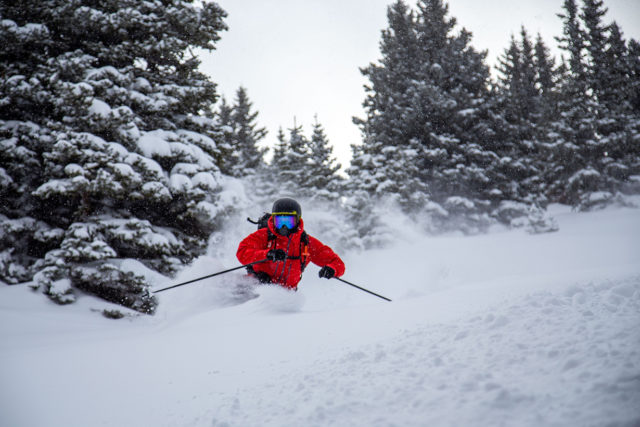
For reference, here’s the buckle setup I tended to use while touring in the Zero G Tour Pro:
- Bottom buckle: closed on 1st or 2nd latch
- Ankle buckle: closed on 2nd latch
- Lower cuff buckle: strap on 1st latch, w/ buckle fully open
- Upper cuff buckle: strap on 1st latch, w/ buckle fully open
- Power strap: fully loosened, but w/ the hook still attached
With this setup, the boot walked very well and made transitions quick and easy. Speaking of which…
Transitions
Luke: Overall, transitions in the Zero G Tour Pro are pretty easy. You have to deal with four buckles, a power strap, and a walk mechanism, but all of these are pretty simple on the Zero G.
The Zero G’s wire-style buckles are slightly more finicky to use than traditional hook / bar style latches (that you see on most alpine boots), but for me, it was an easy thing to get used to. I also really appreciate that the buckles on the Zero G’s cuff can be opened very wide, which means I can get plenty of ROM while the buckles’ wires are still latched onto the last notch.
The Zero G Tour Pro’s power strap has a hook on one end that lets you easily detach the strap entirely. I rarely detached the power strap completely, and instead just loosened it up all the way (which is made easy with the paracord on the strap’s cam-style tightening device).
The new Zero G boots use a burly walk mechanism that we’ve affectionately come to call the “prison shank.” This is very similar to the walk mechanisms on the Atomic Hawx Ultra XTD, Scott Cosmos III, and Scarpa Maestrale boots. The main difference with the Zero G is that it has an additional connection point on the cuff, but I haven’t noticed any downsides to this in terms of touring and transitions. The walk mode is still super easy to use, and a few quick whacks typically clear off any ice / snow that’s built up around it. It’s also very easy to tell when the boot is actually in ski mode, which is a plus.
Jonathan: I don’t have much to add here since super fast transitions are not something I care too much about (once I’ve climbed up a mountain, I like to hang out for at least a few minutes before skiing back down). But with that said, there’s nothing that was tricky or annoying to me about transitioning in the Zero G.
Soles / Traction
Luke: I also spent several days “touring” in the Zero G Tour Pro this summer — if you’re willing to define “touring” as walking around in shorts and ski boots to ski for a few turns. The Zero G Tour Pro did provide ample grip while hiking on rocky and rooty trails, and while scrambling on talus.
I’ve used ski boots with grippier rubber, but for a boot like the Zero G Tour Pro, I’d rather have a more durable sole than the absolute stickiest rubber (more on durability later on).
Downhill Performance
Luke (5’8”, 155 lbs): In short, the Zero G Tour Pro feels really, really good on the downhill. I have no qualms with its lateral power transfer (though I admittedly don’t often have issues with most boots’ lateral support). The Zero G Tour Pro’s rearward support also feels excellent, which I’d attribute to its burly walk mechanism.
But the real kicker with this boot is its flex pattern…
Flex Pattern
Luke: We’ve seen a huge increase in the number of “130” flex boots with walk modes, but their skiing performance can vary a lot. Some of these “130” boots are laughably soft, while others are extremely stiff but lack the progressive nature of a good alpine boot (i.e., they feel like leaning into a brick wall). With enough carbon, you can make anything stiff, but that quest for low weight and stiffness often results in an unpleasant flex pattern.
I wouldn’t quite call the Zero G Tour Pro a true 130, but it is very close. And more importantly (for me), it’s flex pattern is really nice and progressive. I can easily lean into the boot initially, but as I flex it forward more, it stiffens up more and more.
Now, I’m not a particularly big guy (I’m 5’8”, ~155 lbs), so much heavier and / or much more aggressive skiers might prefer having the stiffest touring boot out there. But I much prefer having a boot with a predictable, intuitive, progressive flex pattern over one that’s just really stiff.
When I’m touring I’ll typically end up skiing a lot of weird, unpredictable snow. A boot with a more progressive flex makes skiing this sort of snow easier for me since I can actually flex into the boots initially to get over the front of my skis, but I’m not then going to flex through my boots and get thrown over the handlebars when I hit some weird crust or firm snow.
Jonathan: Yep.
Suspension / Ski & Ground Feel
Luke: The Zero G Tour Pro is a very light boot with a thin liner. As a result, it provides more on-snow feedback than most heavier alpine and AT boots. In other words, it doesn’t dampen out inconsistencies in the snow as well as those boots.
That said, I was surprised by how comfortable I was skiing the Zero G Tour Pro inbounds while we were doing our Lightweight Touring Binding Shootout. While its liner is thin, it’s also pretty dense, and I didn’t really have an issue with the boot feeling too harsh (and I think its progressive flex helped with this). It wouldn’t be my top pick for a boot that I’d use inbounds very often, but it performed quite well during the occasional resort day.
Jonathan: Just to offer a slightly different perspective here than Luke’s, I have no interest in leaving people with the impression that this is a boot that they should consider for 50/50 use inbounds and in the backcountry. Certainly, I expect to see more than a few pairs of these boots in the lift line this season, but I would be happy to have the vast majority of skiers think of this as a lightweight touring boot that offers surprisingly good downhill performance in the backcountry. But hey, if you ski with a lot of finesse, tend to go easy on your gear, keep it fairly mellow inbounds, etc., then have at it, I guess.
Durability
Jonathan has used the Zero G Tour Pro for several days, and I’ve now used it for around 15 days [editor’s note: because Jonathan was dumb enough to let Luke take the boots with him after our final day of inbounds skiing last spring, and Luke has managed to avoid giving them back]. So after a fairly brief testing period (~20 days), we have no durability issues to report. The walk mechanism, buckles, and power strap are all still working perfectly.
The soles have several small scratches and nicks, but there aren’t any notable chunks missing. As I noted above, I’m happy Tecnica decided to go with a fairly stiff, not-super-sticky rubber for the sole since it’s proven to be pretty durable so far.
Who’s It For?
Luke: First, the important caveat: good fit is always going to trump minor performance differences when it comes to ski boots. I.e., just because you like the sound of the Zero G Tour Pro’s features and performance, doesn’t mean you’ll like it more than a similar boot in this class that fits your foot better.
With that in mind, I think the Zero G Tour Pro (and the slightly heavier and softer Zero G Tour Scout and Zero G Tour) could work for a lot of skiers.
The Zero G Tour Pro makes the most sense for people who value low weight and very good uphill performance, but who want a very supportive, yet still progressive flex on the downhill.
There are a lot of very good, ~1500 gram boots out there right now that tour and ski well. But since the Zero G Tour Pro comes in significantly lighter than a lot of those boots, I think it should be particularly appealing to those who tend to do longer tours and will appreciate that lower weight, but who aren’t willing to go to the much lighter (and softer) ~1000-1200 g boots.
As I noted earlier, heavier (190 lbs +) and / or really aggressive skiers may want a stiffer boot. But I think that subsection is fairly small. And if you don’t spend a lot of your time touring (e.g., you ski in the resort more often than in the backcountry), then you’d probably be better off with a heavier boot that provides a more plush, damp ride.
But if you like to put in a lot of time on the skin track and wants a boot that still lets you ski very hard on the way down, go see if the Zero G Tour Pro fits your foot.
Jonathan: Anyone who wants a really good touring boot — and who has feet that are a good match for the shell and liner of this boot. And again, I really hope this boot doesn’t start getting bought by people who will mostly use it inbounds, because there are a whole slew of good boots that I think are better suited for season after season of 50/50 use.
Bottom Line
Luke: I’ve already expended way too many words on this, so here’s the final summary:
The Tecnica Zero G Tour Pro is a touring boot that weighs just over 1300 grams, walks really, really well, and it has a flex pattern that is not only nearly as stiff as a 130-flex alpine boot, but that’s also nice and progressive.
That’s extremely impressive, and is why it’s my favorite touring boot I’ve ever used.
Jonathan: I hope the upcoming custody battle that Luke and I are probably going to have over these boots doesn’t get too ugly.
Deep Dive: ~130-Flex Touring Boots
Next month, we will be publishing our head to head comparisons of the Tecnica Zero G Tour Pro, the (very good) Atomic Hawx Ultra XTD 130, Head Kore 1, Salomon S/Lab MTN, Scarpa Maestrale RS, Fischer Ranger Free 130, and a few other ~130-flex touring boots currently on the market.

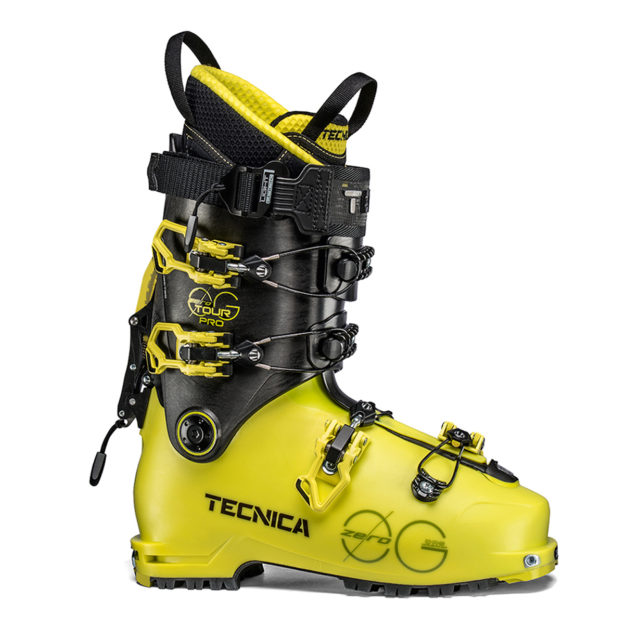
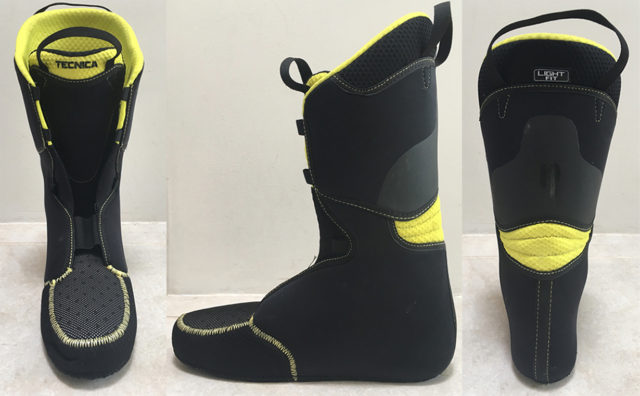
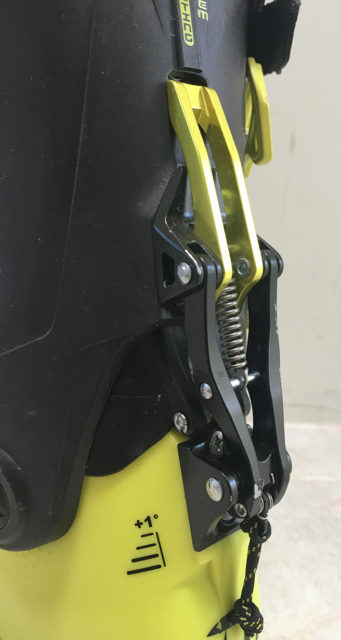
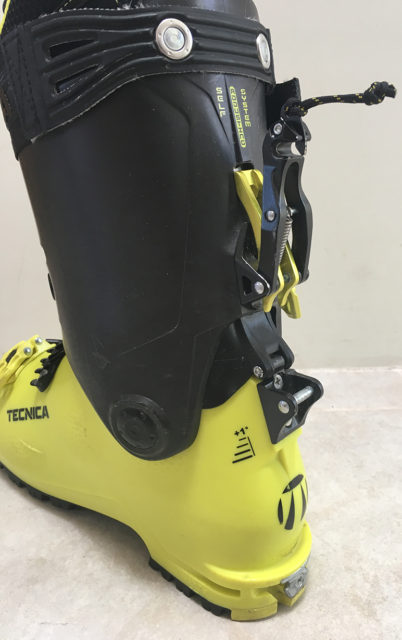
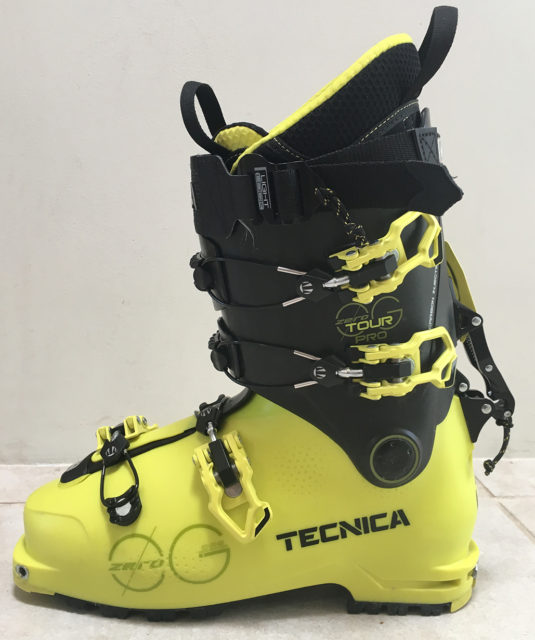
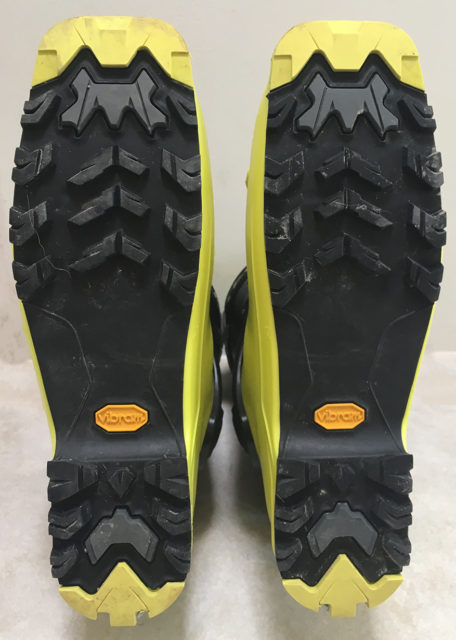
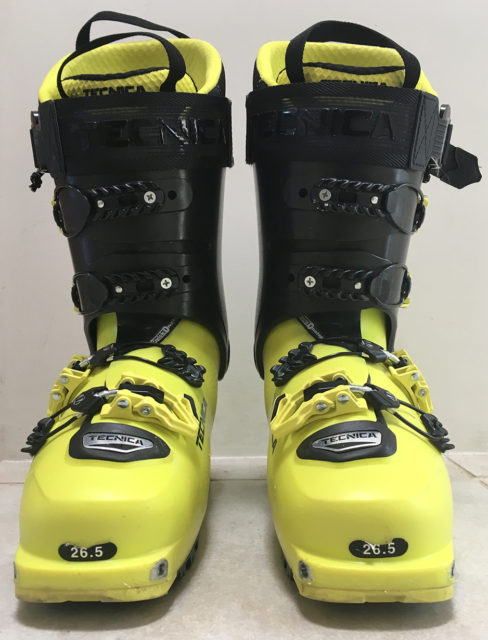
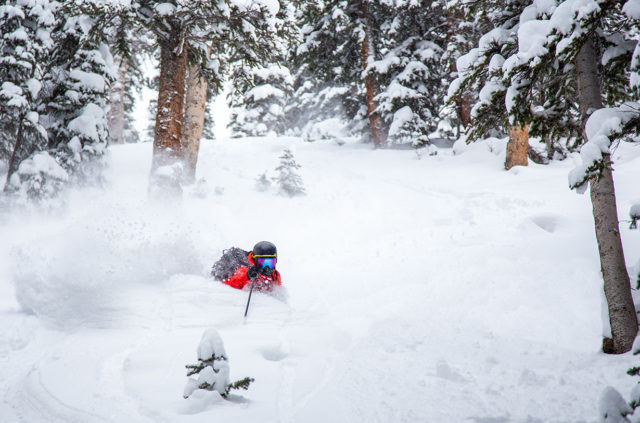
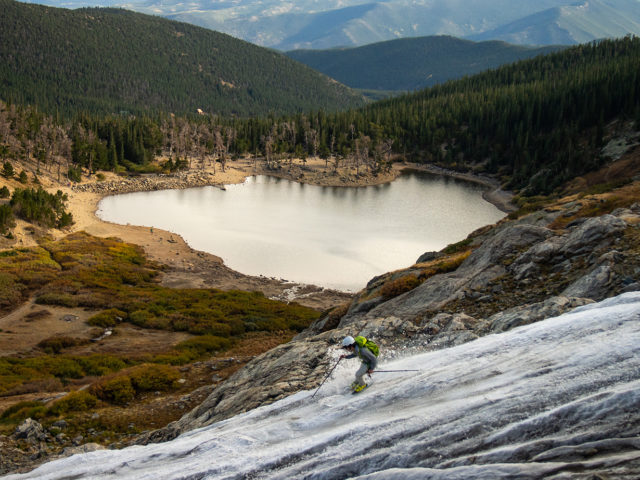
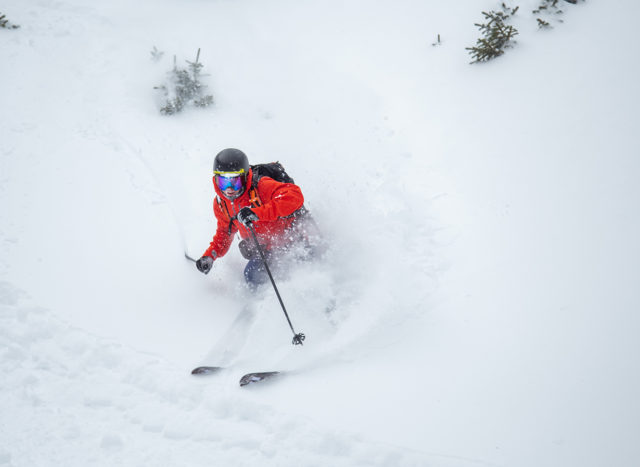
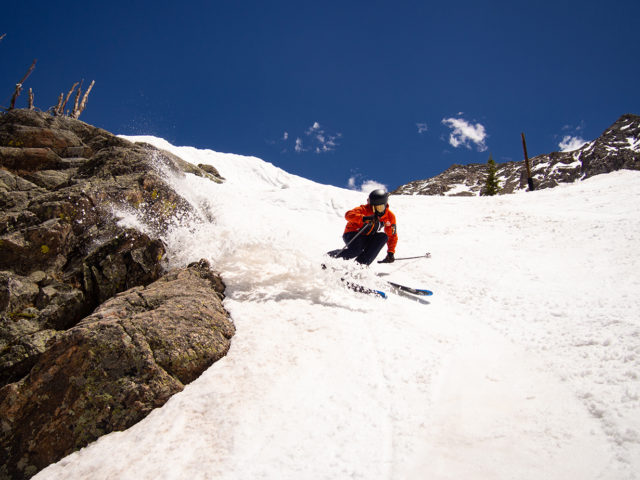
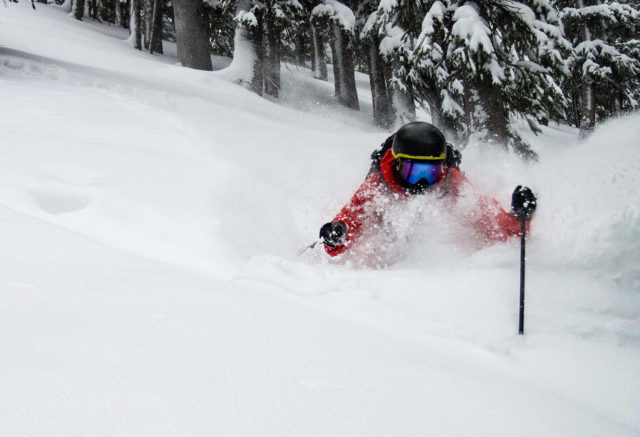
Any words on possible “In-stock” dates?
Hoping to try these on to compare to Maestrales
Sincerely
Wide Forefoot, High instep, low arch, and narrow(ish) heel
Can this go with LOOK DUAL WTR binding as well? Thanks.Tony
Won’t be “in stock” until September if we’re lucky
How close does Zero G Tour Pro ski to a much heavier hybrid boots, such as the Tecnica Cochise or the Hawx Ultra XTD 120?
With the Scarpa F1 I already have a boot in the 1300g category (but don’t know if its is smart to drive a Bibby Tour with it*).
And I need to replace my 50/50 Resort/Backcountry boot.
I feel I should go for a boot further away from the Scarpa F1, such as the Tecnica Cochise, Nordica Strider, Dalbello Lupo AX 120. That was also made clear in the Podcast with the owner of the BlackSheep Shop in Munich, where he praised to go back to full blown alpin boots for freeriding (instead of hybird boots).
*) I thought driving big skis with soft boots was a security risk. But in the Fischer Traverse review, Cy Whitling skied it 109 and 112 waist wide skis.
Thoughts?
How do these fit compared the Cochise? The 2017 Cochise fit me great, while shoes like the Salomon MTN and Maestrale don’t work for me. It’s interesting that you say both the later shoes fit you can these too, which makes me think that the fit is tigher and less roomy in the toe box and arch area.
In your excellent review of the Hawx XTD 120 you pointed out the impact of the liner on downhill performance. How much difference would a zipfit alpine liner make in this boot? Would it come close to a boot like the Nordica Strider?
Jonathan, I am glad you clarify that you would still not see the Zero G as a 50/50 boot.
The flex feels very nice indeed (at shop temperature).
Would you see the Hawx 120 XTD more like a 50/50 boot? More but, still far from it?
I might go with the Salomon QST Pro (fits great, looks silly) or the Cochise if it fits.
Have fun!
How is the fit compared to the old zeroG: does it have the same spacious ankle? or is it more tight?
How are they to get the boot on and off? Embarrassing, but my Lange XT Freetour boots were really, really hard to get out of on cold days. If it was 0 degrees, I’d have to wait for them to warm up before I could get my foot out. Sometimes I would end up ripping out the liner or scraping up my foot…better not to talk about.
I was not able to find a pair of Tour Pro’s in my size but have been riding Tour Scouts for 5 days. 40% BC 60% inbounds so far.
Touring/ Uphill: I am BLOWN AWAY with how well these uphill for a 4 buckle overlap boot. Today I did a tour with my Backland Carbon’s in the AM and then after lunch a quick lap with the Scouts (same skis and bindings, snow got warmer as the day went on). They feel almost as easy to uphill with as Backland Carbon’s with the tongue in (tongue out there is no beating the Backland until you get to race boots). I’d guess that double lock system letting them pull the back of the cuff way up is definitely a contributing factor. Really with how light and well the Scouts ski my Backlands are probably just going to become high milage/ fitness mission boots.
Flex: Pretty f-ing impressive how progressive and supportive these boots are for being less than 1400g. Don’t have too many boots to compare them to in my personal experience but they are stiffer and more progressive than Dyanfit Titans and all the of BD boots (the last Factor was probably stiffer than the Scouts, but no progression). Never felt the hard stop (or sudden drop off) of other AT boots when inbounds driving Enforcers.
Fit: The long and short of my fit is average to narrow everywhere except for my HIGH INSTEP. They aren’t the highest I’ve ever tried on but certainly high enough that once I cook the liners I’m sure I’ll be able to keep all my buckles tight all day at the resort. It almost seems like I might just be able to pack out the liners enough to not need.
Forward Lean: Ok I’m really not a fan of the upright lean angle when they’re in regular downhill bindings. Looking to find a bolt on spoiler to try to get some more forward lean since I have a skinny lower leg.
Entry/ Exit: Entry isn’t too bad, does help if it’s warm, easier than my old Titans or BD’s. But my instep does get pinched getting out of the boot :( Not surprised with how tall my instep is, might trim a little material off medial side of the overlap to help. Again, I wouldn’t put much weight in this as my instep is stupid tall.
So these don’t fit a regular alpine binding like an Atomic Neox 412?
Hi Blister,
Great Review as always – After reading and ” getting to know thyself ” per Jonathan and Luke – this boot is nice but not for me as I am only a occasional touring skier – short hops to catch a patch – not even a 50/50…..I have old old Garmont Megaride and they are jarring as heck so my priority is suspension and comfort not weight. Given those parameters which direction would you recommend……Scarpa Maestraele ? Atomic Hawk ? to be used on Raven w KP bindings. I am kinda looking for a Alpine boot that is KP adaptable. I ski on Salomon XMax 120 ( little soft but I like them )
Thanks Blister ,
Guy
Looking forward for the deep-dive… I’m really curious to see how they compare to the Maestrale RS2
Since you made a point of saying it goes down to a 22, can you guys confirm the bsl on the size 22 and 23 to ensure they’re not a larger shell just with a toe dam? The evo size chart only shows down to a 24 with 285 bsl.
Just talked to Tecnica about this — it looks like they’re actually only offering it down to a 22.5 (their previous catalog had said 22.0), and the 22.5 does have the same BSL as the 23.5, which is 272 mm.
I’ve put about 40 days touring on these boots this season and I’m still undecided if I like them. Firstly they are a b!$@# to get on! Straight out of the box they are pretty tight, really tight over the front of the ankle (Think Maestrale ankle strap zone) quite a bit tighter than the cochise 120. They have broken in well to a similar fit to the cochise but not as comfy as Maestrale. I cannot emphasise enough how hard these boots are to get on when cold. I camped overnight at -15°c and could not get these on in the morning to save my life. I had to boil water to put in a bottle to warm these up to get them on. Even if you leave them in the back of your truck they will be hard to get on. Getting them off isn’t much easier . BUT they do ski pretty damn well. In fact, they rip. I ski them on Zero G 108’s w Kingpins and there’s nothing I wouldn’t ski. They walk OK. I don’t believe the 55° articulation. I’d say 40° at best. I’ve put probably 500km+ walking in them and they OK. Not great. The booster strap is useless(?!) it slides up above the carbon cuff and doesn’t cinch down tight anyway. The buckles are pretty nice, the teeth are soft though so bottom ones get munch when scrambling over rocks in them. They do climb very well with the rubber sole/rocker/precision fit. I’m happy to climb exposed rock/ice in them. Crampons (Techpon 250 & Sarken) fit very well on them. Overall they’re probably not quite as tour friendly as I was hoping (I don’t ski resort at all) but they do ski well. They’re really not cut out for expeditions unfortunately and take a bit of breaking in. If they didn’t ski so well I probably would have thrown them into the forest after how hard they are to get on/off (I feel it’s the lower material is too stiff where it underlaps the upper boot around the ankle, doesn’t open up enough to slide the foot in) somehow the pull loops have not broken under extreme tension so far. 7.5/10
Skied these boots 2 days (no touring) in spring conditions in the french alps. They weigh 1380grams in size 27,5.
Very very to ski! In fact I was really surprised even though I had done some serious research before buying them. Nice flex pattern (I ski dalbello boots otherwise) I skied völkl mantra and a blizzard Rustler 10 in heavy wet spring snow, slash, moguls and horribIe frozen snow. I weigh about 100kg with gear. I like them much better than my salomon mtn lab. There is no doubt in ny mind that they will tour much better aswell.
I have wide feet (fore foot 106mm) and I needed to heat mold both liner and shell and add padding to pressure points in the store. After that; two full days of skiing without any problems. Really comfortable! Without this bootfit it would have been impossible though.
I plan to pair these with a mantra v werks and a shift bindning for a kit to do it ALL. I skied in very nice weather so can’t tell you about cold weather performance.
If they hold up, and I think they will, this will be a blast :-)
I have skied 50+ days on the Scout, both involving lifts and over 25000m of ascent.
Great boots, but watch out for the ski/walk mode. At different times I have lost a screw attaching the top of the mechanism to the boot on each boot. And this after nipping them up after loosing the first. It causes the boot to pop out of downhill mode at inconvenient times.
I carry spares now.
Very important observation there by HammondR!
My screws also needed attention after 3 days of touring. Will try to fix this with Loctite.
Other than that; very happy with the boots!
Please can you tell me if these boot soles of the new Tecnica Zero G Tour Pro work safely with Salomon Guardian MNC 13 bindings (mine are a couple seasons old but have the sliding afd). My local ski shop crew say no but I’ve heard from other crew that they do.
Cheers Jon
As long as your Guardian is the MNC version with a toe piece that can adjust vertically, the Zero G boot should work with it. The Zero G has an ISO certified touring sole so it should work with any MNC binding as long as you adjust the toe piece to the appropriate height.
Hey guys!
I was just able to try on a pair of the Pro G’s today. They felt… like a good boot.
I know all the specs and have done my homework on the boots technical qualities and I think they match up well with my skiing style (I’m a 6’3 215 skier who’s fairly aggressive, and only doing more and more touring as the seasons keep going after starting to actually get to the backcountry 4ish years ago. Otherwise have skied “inbounds” the rest of my time.
I’ve been on and am currently using Cinderella story “perfect fit” craigslist scarpa maestrales from 2012/2013 and thus have a boot that is worn to perfection to my foot.
In trying on the new Pro G’s there was minor discomfort in the top of the foot and a little kn the outer mid sole near the base of the pinky toe — but when locked down and in ski mode with an active stance most of the discomfort went away. The heel felt fine in both walk and ski mode.
I haven’t had boots heat molded before but my family swears by it.
Am I getting too bogged down in the details of a “perfect fit” especially with the advent of the heat molding magic bootfitters can now work?
I want these to last and dont plan to buy boots for a while after this purchase.
Any thoughts or especially updates on how these boots wore on over multiple seasons?
Best, Zach W
Ps, great review of the boots and other stuff you guys rock!
Have skied these boots both inbounds and out a couple times now, and really really like them. In my opinion, they are not as stiff as the S-Lab MTN (MTN labs), but walk significantly better (especially forward ROM). A little looser in the heel, and slightly higher volume overall. Skinny calf people beware, I have the lower buckles as tight as they will go (moved the buckle clips AND micro adjust dialed all the way down) and I can still flip the buckles with just one finger. Looking into maybe drilling out a third hole to make calf closure even tighter.
One really bad thing to report: just yesterday I snapped BOTH wire buckles in one day. Hoping this is just bad QA and not a design flaw, and that warranty will take care of me. If not, I’ll be really bummed and not buying touring boots from them again.
Overall, this is a dialed boot that skis wonderfully, walks really really well, but has some issues with durability of the buckles and fit for those with skinny ankles/calves.
Hi Brett,
You say: skinny CALF people beware, I have LOWER buckles..”
In my mind, the lower buckles are the ones on the clog, the upper buckles are the ones on the cuff, and therefor relate to calf (top upper buckle), and ankle (bottom upper buckle).
Can you clarify which buckles you are talking about?
He obviously means the lower cuff buckle on each boot.
Note his reference to “mov[ing] the buckle clips” – you can only do that with the cuff buckles on the Zero-G. The clog buckles are effectively immovable because of the way they sit in fixed-position recesses.
Just bought these to tour in Marker Kingpins and found that these are not compatible with them. When the toe is locked out they will pop out with minimal torque. Not good. We went into the shop and tested on new kingpins and another set of older ones and no dice with my zero g’s. I popped some Dalbello boots into the kingpins and they held just fine. Of course there’s no literature guaranteeing kingpin comparability with dynafit certified boots. We’re going to make a video and send it to marker. Something worth checking into if pairing either. I just bought atomic backland bindings and they work flawlessly with these boots.
I just got a chance to spend an hour in the zero-g-pro-tour in the shop. I tried them along side the Maestrale XT and atomic backland carbon. If they fit your foot, I can see why people really like the ZeroG, unfortunately, they don’t fit my foot as I have a fairly high instep.
Things I like about the ZeroG ->
The Zero G cuff felt very secure, and progressive, and broadly supportive.. This cuff feels about 1000x better in ski-mode than the backland carbon, while apparently only weighing ~30% more. Leaning into the cuff felt really good and supportive, with no pressure points, unlike the backland carbon, which basically feels like it has a thin band of steel holding my shin.
In the shop, I especially like how the Zero-G top buckles transition to tour mode. The flexible loops not only “clip” securely into the “touring clip” in their most open setting, but the buckles also “lock” in the open position. It might be a bit fussier in gloves, but i like the way everything easily stayed where I put it. With the Maestrale XT everything wanted to flap around if not done in just the right order… I’d have to first undo every buckle and the strap, and *only* after this, move the buckles to the touring clips. If I tried to undo just one buckle and immediately put it into the touring clip, the tension on the other buckle made the undone one too long and it would flop out. Of course both of these systems work just fine, and you’d get used to either, but I prefer the way the Zero-G system works.
I found the zero-g pro tour (subjectively) easier to get into than the HAWX XTD, as a similar overlap style boot.
Unfortunately, the Zero-G didn’t fit my foot very well in ways the bootfitter said he couldn’t really do much about. I’m 10.5 US / mondo ~28. My current downhill boot is a 27.5 dalbello pantera, though in some boots I upsize to 28.5. In the size 28.5 ZeroG, my heel was swimming around sideways and up-and-down, and yet there was a slight but noticeable bite on my instep. A footboard solved my heel slip, but made the bite on my instep unbearably painful. This might be partly due to the thin touring liner, but it’s mostly because the shell doesn’t have enough instep room for my foot. I’m sure sizing down to 27.5 would make the instep bite worse. My bootfitter said it’s really hard to create more instep room, and that it’s better to find a boot that fits better there. The Maestrale XT 28.5 certainly did, no instep bite at all. I didn’t like the Maestrale XT design as much, but it felt much better on my feet.
I’ve been using these for the season so far and only have about 60km in them, but have a broken buckle. The wire buckle design is great in theory but in practice is pretty annoying to actually use, and the middle buckle on my left boot has broken with the wire pulling out of the metal swage. There’s no real way to fix it in the field, and you can’t fully unscrew the wire-loop section, so the only solution is to drill out the rivet and put a new buckle on (which luckily Technica sells for $30, but I’m hoping they’ll send me the buckle free since I’ve only worn these boots for about 8 ski days).
The powerstrap is essentially useless in my experience as well and rises up over the cuff. I’ve got skinny calves so it barely does anything when correctly in place and tightened all the way too – it just doesn’t have enough range of adjustment.
Both liners have wear spots into their foam where the interior buckle rivets are wearing away while walking. This isn’t a huge issue and some well placed fabric tape will slow the wear, but still frustrating to see considering how little use the boots have gotten. Technical really could have avoided this by using a more robust material in these areas of the liner like other boots.
Overall, I really like the _boot_, but the hardware and little things are what aren’t great and make it seem like they rushed the design to market without any real-world testing.
I’ve toured in mine for around 150 days and I really like them. The liner feels like it is just now starting to fit even better. BUT, a few day ago I noticed that the large cuff rivets have developed some lateral play, maybe 1-3mm. Anyone with a high mileage zgtp have this issue? Wonder how to go about fixing it?
I’m a little worried about the lean angle of only 13 degrees. It sounds pretty upright to me. Does this affect the downhill performance in any way or is the flex progressive enough to compensate? The Hoji Free comes with a lean angle of 17 degrees, but only with a built-in spoiler. Without the cuff is supposed to be just 11 degrees. Do you think one could increase the angle of the zero go pro with a bolt spoiler too?
@ Luke Koppa. It sounds like you have almost identical feet to mine. Can I ask what other boots you have got on well with as I am struggling to find anything that fits me well. Any advice would be well appreciated. Thanks
While I can’t guarantee they’ll fit *your* feet, the Atomic Hawx Prime XTD is the touring boot that’s offered the best out-of-the-box fit for my feet. The Nordica Strider also fits my feet really well, but that’s more of a 50/50 touring/resort boot, rather than a dedicated touring boot.
What do you think of using the Tecnica zero G pro tour on piste given their high and progressive flex? There are some relevant disadavteges to consider? Thank you!
Luke/Jonathan – how does the Zero G compare to the new Fischer TransAlp Pro? They seem to be competing in the exact same class, right?
Thanks,
-Felix
I’ve had these boots since the start of the season. Impressed with the stiffness (coming previously from the Spectre 2.0) , but still struggling to find a suitable ski for it.
I was skiing the Volkl VTA 98 177 but now I’m leaning towards the Salomon MTN 95 184 since the VTA does not offer the support anymore.Would this be a good match for this boot?
Have used the the Technica boots 1,5 season for backcountry/rando(about 250 days and 130 000 height meters) so quite a lot use.
I am satisfied with the boots when talking about the outer one/shell. Stiff enough for skiing and okay for walking.
Had to do some boot fitting which is easy because of the material. Done that at a proffessional boot fitter.
The inner/liner is thin and really bad so switched to Intuition Pro M which is perfect whit this shell. Heard from others which done the same.
Another bad thing is the buckles. The thin wire have broken twice and seems to be a very week. Would like to have more solid construction.
As an update, the boots are not ISO 9523 unfortunately. I went to have them mounted and they said they were not compatible. I have seen it stated in multiple places that they are ISO 9523 so I messaged Tecnica and they confirmed it is not ISO certified but they said it’s geometry is compatible with the Shift binding.
After 40 days or so mine have developed tons of slop in the cuff rivets -> very imprecise on hard snow. Rest of the boot looks almost new. I just spent an hour perusing the interwebs, and sounds like this is very common, and I have not read of a fix. For comparison, my Cochise with many more miles has no slop.